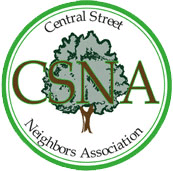More Is Not Always Better
No one can argue with the fact that downtown Evanston now is more vibrant than that of 20 or 30 years ago. Or, at least, I certainly won't. I remember all too well when the food options consisted of The Gold Coin v. Jim's Char-Broil, and the sidewalks rolled up at 5:00. I enjoy having the movie theaters, the coffeeshops, the two large bookstores (and the fact that Bookman's Alley survives), a variety of dining choices.
But I'm sick of hearing the sounds of that dead horse being beaten.
No one -- no one -- is advocating going back to that. Moreover, the argument turns on a couple basic fallacies.
The first fallacy is that residential growth caused the vibrancy. In my observation, which goes back over thirty years and includes working and traveling into in the core of downtown Evanston nearly every day for the last decade, this is pretty debatable. With the possible exception of the Park Evanston development, what I observed was that leisure-dining-entertainment commercial investment during the 80s-90s economic boom drove growth, making downtown Evanston attractive beyond its proximity to transit and lakefront (which, historically, would have eventually produced desirability regardless of economic cycles). The first reawakening of downtown Evanston came about not through any increase in stores competing with Old Orchard, but through a more progressive approach to food and beverage establishments, including in particular liquor licenses, but also including coffeehouses and bookstores being open late. For the first time in years there were numerous options, from Tommy Nevin's to Kaffein, for grad students, undergrads, NU academics and staff, and workers from the much-maligned Research Park to go to.
Establishments like The Parking Lot, Dr. Wax, Vintage Vinyl and the now-disappeared record store on Sherman further attracted hipsters (who perhaps did not spend that much, but added to pedestrian ambience). At the same time, changes in demographics and finances of some of the university community, as well as a shift in pattern of campus social activity, led to more venturing into downtown Evanston.
By the late 90s, the sidewalks on a typical good-weather evening in downtown Evanston did not have tumbleweeds, but pedestrians, largely young adults. If you drove through, there was a feel that something was "happening." The movie complex project then provided a massive kickstart, and, significantly, added significant new retail space where there had been surface parking lot. This occurred at a time of a booming national economy.
While new condos built simultaneously with and then after those theaters and stores undoubtedly added both pedestrians and residential spending dollars throughout downtown, the theaters would have been a success even without. Certainly out-of-downtown moviegoers provide the overwhelming bulk of the theaters' business.
So the first fallacy is that condos produced vibrancy. With the exception of the much larger number of restaurants, it's more the other way around. The condos followed favorable economic and market conditions for building condos, although they unquestionably helped fuel the cycle further.
The second fallacy is that since downtown Evanston in 2008 is denser, taller, and better than 1988, that further height and density will produce further improvement. I.e., since "more" has been correlated with "better," even more will be even better.
The failure to acknowledge the flaw in this reasoning is stunning. More is not always better. Say I was really hungry yesterday, but now have had a large steak dinner. Am I more satisfied? You betcha. If I now have a second steak dinner, or a third, right after the first one, will I be even happier? Not likely. If two drinks make me feel happy, will four make me euphoric? If a dozen people talking in my kitchen are fun, will two dozen or three dozen be even more fun?
In anything involving numbers, from passenger car occupancy to biological populations, from real estate markets to parking garages, there are usually optimal numbers for sustainable functioning, and a limit on how much you can add before increasing negative effects outweigh the positives. We have recently added thousands of units and households to Evanston, hundreds more are being built or have been approved, and the effect is not yet known. Sure, we haven't gotten back to Evanston's peak population, but that peak was back when households had a lot more children and a lot fewer cars per capita, back when one person's job could support most families, and back when Evanston had more jobs, especially middle-class and good working-class jobs, to offer. I suspect analysis of interim census data would show we are close to, or have exceeded, a record number of households and automobiles, without significant job growth.
There also has to be some impact of downtown building on land values, rents, and prices in the less-denser neighborhoods of Evanston. In the long term it might be positive. In the short term it might be negative. Or it might be the reverse. What is known is that this has not been examined sufficiently, and preliminary evidence is that overbuilding has negatively impacted the existing-home market.
We have not yet gauged the impact of the growth spurt we've just had, but the instincts and gut feelings of thousands of residents, even those like myself who appreciate a more lively downtown, are that things are changing very rapidly, and are perhaps at a tipping point. When thousands of people are intuiting the same thing, that ought to be respected. We can always build, but once having built, it's difficult to un-build. The citizens of Evanston urging a more thoughtful, reflective, and planned approach to development in the community where they've invested their fortunes, families, and lives deserve better than shallow argument and simplistic name-calling.
- jeffpsmith's blog
- Log in to post comments
